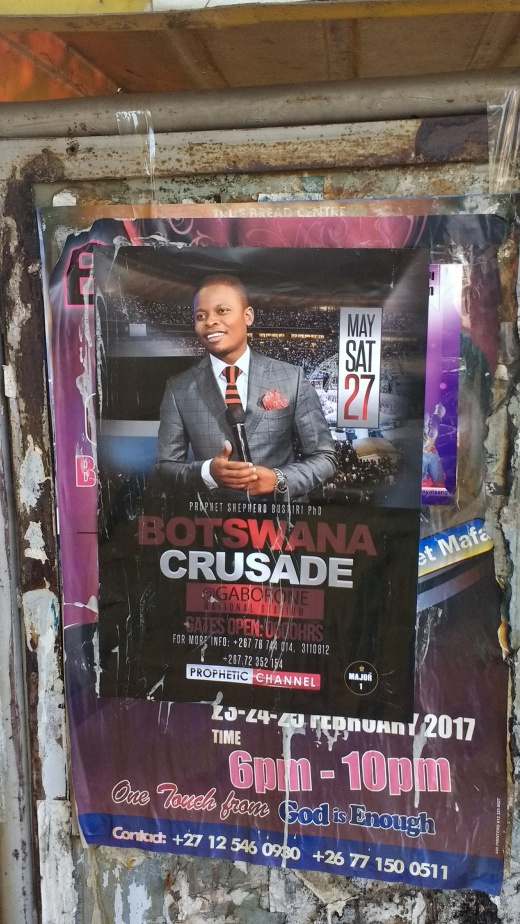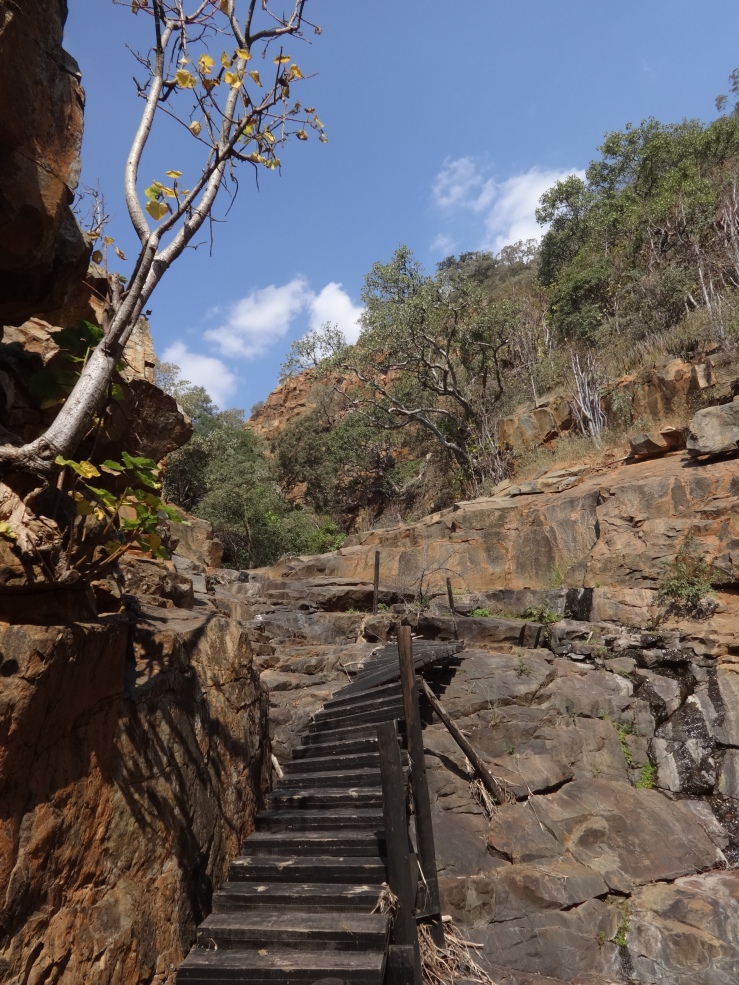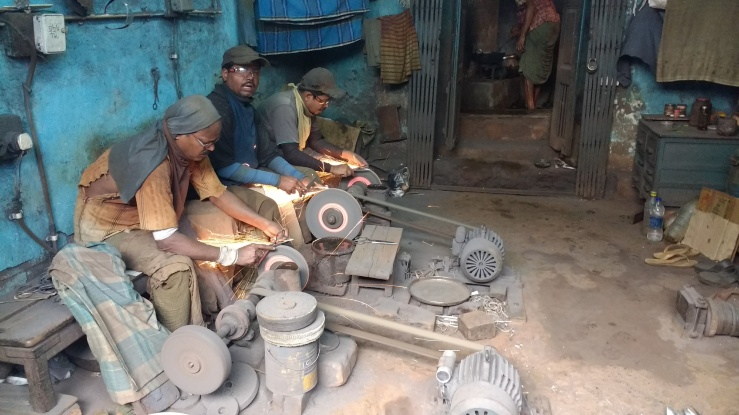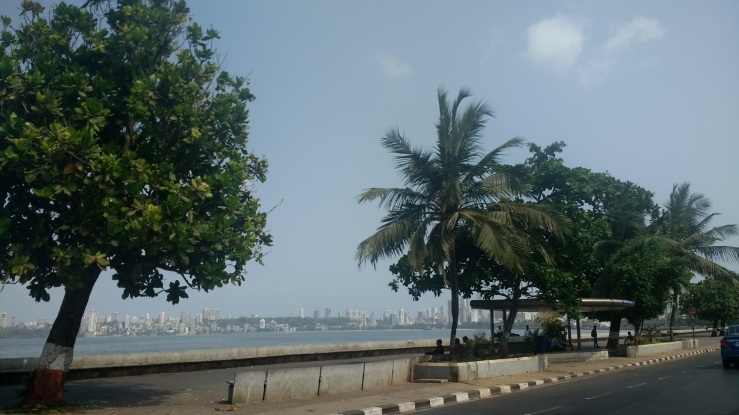I meet Isabella the day I arrive at La Escuela de la Montaña. She lives behind a small wooden fence, in a tin roof house of four wooden beams at the end of a dirt footpath. The house is divided into a living room and a kitchen with a tarp, though the entire time I’m with her, I never see the living room. I spend my time either at the small table on the front landing, overlooking her dirt yard, or in her kitchen. At the far end of the kitchen is a wood burning stove-top, where there is always a griddle frying tortillas. To the left is a stack of vegetables and kitchen equipment, and on the right there is a small table with a plastic, floral-print tablecloth. Atop it are sugar, tea, and instant coffee. The room is lit by an uncovered florescent bulb, the universal lighting in Guatemala. In her front yard are a series of wooden poles, shoved into the dirt, with clothes drying on the wire between them. Nearly attached to the house are two other shacks where her neighbors live.
Isabella is short and stocky. Even in the absence of her warm, easy smile, her eyes are turned up. She gives me a seat on the front porch, offers me chicken and frijoles. She’s constantly making tortillas, patting the dough between her hands and quickly rotating the disc between her fingers, until she places the perfect pancakes of maize and water on the stove. Her Spanish is too fast for my two weeks of practice, though we manage to cover what food I like (everything), the white, scrawny puppy tied up by the fence (Toby), the problems he causes in the kitchen (todo), and the Spanish names of the vegetables in her pantry (forgotten). Her kids pass through: her youngest, Emerson, who is around 6, and the elder, Oliver, 9. They’re terrified of me. Other families in the community regularly eat with students from La Escuela de la Montaña, but I’m the first in their home.
La Escuela de la Montaña is a Spanish language school in a rural part of Guatemala. It was created as an offshoot of Proyecto Linguistico Quetzalteco (PLQ), a school that prioritizes learning Spanish within and through the history and culture of Guatemala. PLQ is based in the city of Quetzaltenango (popularly known by its Mayan name, Xela), but because roughly half of Guatemala’s population lives in rural areas, the school prioritizes students experiencing life outside of cities, in the untouristed parts of the country. These spaces tend to be poorer than the cities, and the area around La Escuela de la Montaña is no exception. The two neighboring villages, Nuevo San Jose (where Isabella lives) and Fatima, were founded by families fleeing coffee fincas. The history is multilayered and specific to each finca, but, in short, Guatemala has always had a single cash crop, coffee. For most of its independence, farming was done plantation style. Families were paid sub-subsistence wages and received a small plot of land for their own use. Typically, the workers were ethnically indigenous, while the owners were blancos, or the white descendants of the Spanish. All of the workers’ health care, supplies, and housing were provided on the finca, and families farmed for themselves only after the work of the plantation was finished.1 This system persisted until the end of the Cold War and the rise of neoliberalism, when workers were given the “freedom” to search for work on the open market, without a commensurate increase in wages. At the same time, a collapse of world coffee prices during the 1990s forced many workers to labor without pay. The villagers-to-be of Nuevo San Jose and Fatima spent years organizing to successfully sue for back wages, after which they were summarily fired. Some of the leading labor organizers helped form these communities around the same time La Escuela de la Montaña was created. La Escuela seeks to be a part of these communities, dedicating a set portion of tuition to projects in the villages, such as supporting local education and providing scholarships to students. More immediately, they pay the women who are providing our meals. Jobs are scarce, and the men of households travel each day to nearby cities to look for work. The women generally stay at home, providing childcare and cooking, with little contribution to household finances. Our payments give them a more formal place in the home economy. All of which informed my decision to attend PLQ over other language schools.
More personally, I traveled to Guatemala after assiduously refusing to learn a foreign language over a year of travel. I cannot remember a single lesson from the high school Spanish classes I faked my way through. Languages have scared me for the same reason as dancing lessons: I’m inherently bad at them and improving means public failure, an open vulnerability I loathe. Plus, I thought, I would have to deliberately restrain the depth of my conversations to the level of my language. But I’m starting medical school, entering a health care world where many patients feel more comfortable in Spanish than in English, and I want to bridge a little of that distance. What’s life without humiliation anyway?
Guatemala has calmed since the height of the civil war in the 1980s, but it remains dangerous, even if those threatened are mostly people who live there. A man was shot and killed on the road near the school a couple weeks before I arrived, likely the victim of gang violence. It was almost certainly personal, but the school insists each of us walk home with a student partner, accompanied by our respective host moms. Isabella and I walk up the uneven cobblestones, her rushing to keep up with my steps, while another student and his host chat behind us. We manage a few words about the weather and then fall silent. I can compose phrases in my head, placing the building block verbs I have mastered into familiar patterns: Tener, ser, estar, querer, poder. But then there would be a follow-up, and a follow-up, and a follow-up, and I am unable to relinquish control. Passing by the shrine of flowers in plastic bottles, placed where the young man had died, I manage “muy triste.”
“Un accidente,” she responds. We walk the rest of the way in quiet.
Classes start the next day. They’re one-on-one for four hours, outside in straw-thatched ranchitos. Every afternoon it rains so loudly that we can barely hear each other, even with the straw dampening the sound. Class is a mix of irregular verbs, conversation, and mosquito slapping. By the second day, my legs and feet are covered in bites. The rain drives them inside, straight to us, looking like a snack. I’m struggling this week. My maestra is trained as an elementary school teacher and has the reserved manner to match. Class is structured formally, repeating the same subjects, working out of a textbook. She seems amazed that an adult my age keeps making the same silly mistakes, throwing in prepositions as the spirit moves me. But the space is beautiful. The daily rains make the world a verdant green. A coffee finca is in the back of the school, a steep hill leading to a river, above which is a lookout where I sit and make flashcards, next to deep purple flowers. The gardener, Jorge, is a miracle worker, creating an ordered jungle. Three dogs, Coyote, Hache, and Luna run and play in doggy bliss while I lie in the hammock on the front porch, half-reading a novel.
Isabella’s children are still scared of me. During meals, they play with marbles in the yard. Isabella suggests I join to cut the tension. One day, after the rains have stopped and the ground has had a chance to dry, I head over. Kids have no capacity to target their vocabulary and asking them to slow down gets me blank stares. After a brief struggle to communicate the rules for marbles, they give up on educating me and suggest tag with a light push. We run around, and I try to play my role, giving their short legs a chance to catch up. Little Emerson keeps coming for me, and my long arms swing around, nearly knocking over the laundry poles and sending a day’s work into the mud. As I duck around the small hands and thin poles, my feet slide out beneath me. I fold into the mud, coating my pants and jacket. The kids laugh, Isabella looks mortified. I try to smooth things over, but my Spanish fails. All I can manage is repeating “está bien” over and over and excusing myself to go take a bath.
When I return for dinner that night, Isabella is still worried. I reassure her it’s fine, it’s a good story, it was my fault. I don’t know how to set her at ease. All we manage are pairs of sentences, sprinkled with pauses as I look up words. There is no back and forth. I feel my way around conversations about feelings, without the confidence to address them directly. But the kids are comfortable with me, now that they’ve seen my true self. I bring down a Richard Scarry book of common words for us to read. I practice the Spanish and tell Oliver the English equivalents. He’s whip smart, picking up words fast and intuiting English sounds. We make plans to play fútbol at the school tomorrow. But the whole next day, Isabella seems distracted. I wonder if I’ve committed a faux pas, or if she’s still thinking about my fall. But we’re almost strangers, and our conversations remain limited to Como estás? Todo bien, y tù? Muy bien. As pro forma as can be.
Of course, it has nothing to do with me. When I show up to dinner, her kids wave hi and continue playing. Isabella is quiet for a minute until I ask, “Como fue tù tarde?” OK, she replies, breaking our implicit vow of substanceless chit-chat. She spent the afternoon at the cemetery. Her son died three months ago in a car accident. He was 18, returning home from Xela, where he was studying on a scholarship given to him by La Escuela de la Montaña. He was so lively, all the other kids are so serious, Isabella says. Her smile stays, but tears start to leak from her eyes. She asks if I want to see a picture, passes me a photo, crinkled from handling, tinted by the smoke. He’s in a marching band, carrying a snare, one hand lifted as if to hit the drum head. The boy is tall, good-looking, in a black button-up shirt and jeans. I say he’s handsome, and set the photo next to my plate. Isabella tells me her daughter is about to give birth. She’s around his age. Life is happy and sad, she says. I think she’s trying to count her blessings. I can’t form the words, or the words to follow the words. I offer a hug. It seems like the thing to do.
It’s only later that it occurs to me I don’t need the words. If I could offer a more complex sentiment, would the words be any less empty, any less sufficient for the scale of her grief? My presence has little to do with nouns and conjugations. It is only presence. It is only hearing and seeing and knowing.
We rotate señoras each week to reduce the stress placed on each house and to spread the income throughout the community. My last night at Isabella’s she greets me with a smile, introduces her daughter. She’s very pregnant. I search in my head for the words. “En inglés ‘congratulations,’” I mumble, more to myself than anything else. She says, “Oh! En Español, embarasada,” pointing to her stomach. Embarasada means pregnant. The conversation moves on, a little comedy of errors for the next gringo visitor to navigate. I ask if I can make a tortilla. Isabella says sure, then watches as I produce a sad, misshapen pancake. Isabella, without a trace of sarcasm, pats me on the back, “está bien.” Enough said.
The next week goes by in a rush. My new instructor is the best I had at PLQ. She forces me to talk, but corrects my mistakes with such grace that I feel comfortable. We even manage to crack a few jokes, and I start to see the edges of conversational Spanish. My new señora is a nearly deaf 79 year-old woman, so my mealtime chit-chat focuses on the rain. I still owe the kids a fútbol game. I stop by and call Oliver over. Oliver has learned how to navigate my Spanish and now communicates mostly with hand signals. He indicates I should wait and goes to gather a crew. The game goes well, though I’m supplanted by a Jesuit priest-in-training named Ian who has played since he was 4. The kids love him. When I invite them up the next day, the first question is if Ian will be there. My efforts to buy their love are all for naught, though Oliver is bad enough at fútbol we at least bond over our shared bookishness.
The last day rolls around. I go to say goodbye to Isabella. She asks me what has become a common question in my last week: “Vas a volver?” Will you return? I say I hope to. She says that she prays that I will, that I have meant so much to her in the last couple weeks, that she only started taking in foreign students after her son’s death. I’m speechless, at a loss for words in every sense. I give her a last hug and walk back to the school.
What do we offer each other when our worlds crack open? I am tempted, always tempted, to solve, to change, to make reality something other than what it is, to use persuasion to transform circumstance. But in the immediacy brought on by limitation, by placing myself within the moment, I find depth. I find health, but not a cure. A cure would deny Isabella her right to grieve, would imagine some mortal state where her loss is restored to her. Health is found in mutual recognition, in how we know each other, in a space beyond language. I can’t go on. We’ll go on.
I’m starting medical school at UNC-Chapel Hill. I want to get my hands dirty and participate in the art of healing. I think this will be my last post here. I will find another forum for writing, I’m not sure where. I want to write about other subjects, or find ways to write about death outside of a travelogue. To everyone who read any of this, thank you. Your generous thoughts and eyes have pushed me to write and think more clearly. Hope to hear from all of you soon.
1. For a great history of the brief moment Guatemala was freed from this system, and the United States’ role in crushing that dream, read Bitter Fruit: The Untold Story of the American Coup in Guatemala.↩










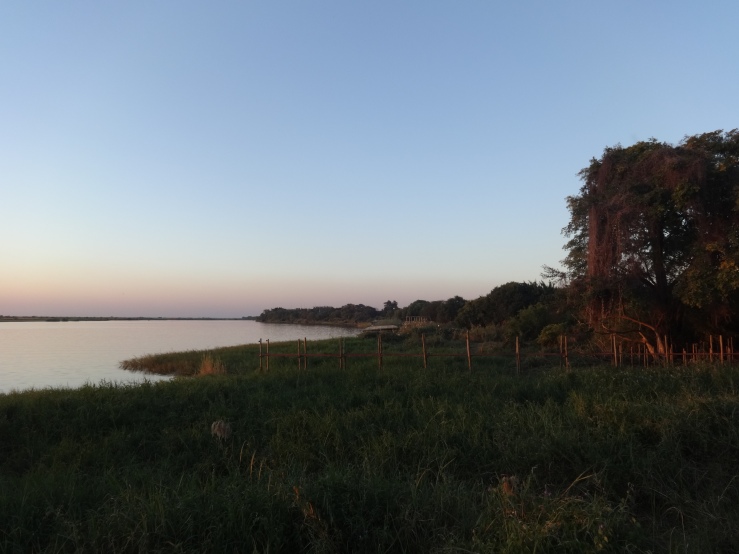
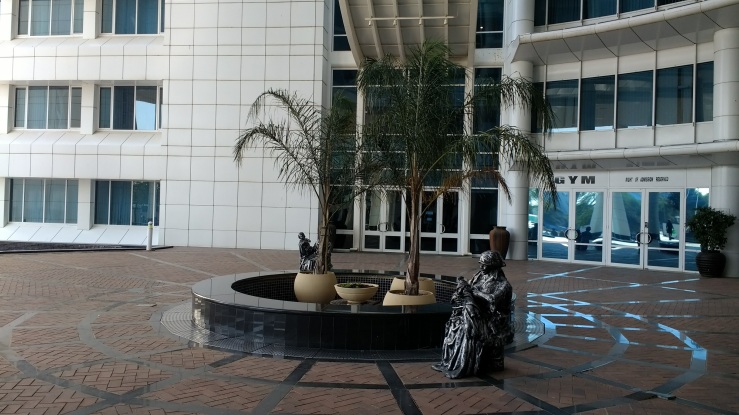


 Fields of sage on the road to Kasane
Fields of sage on the road to Kasane
